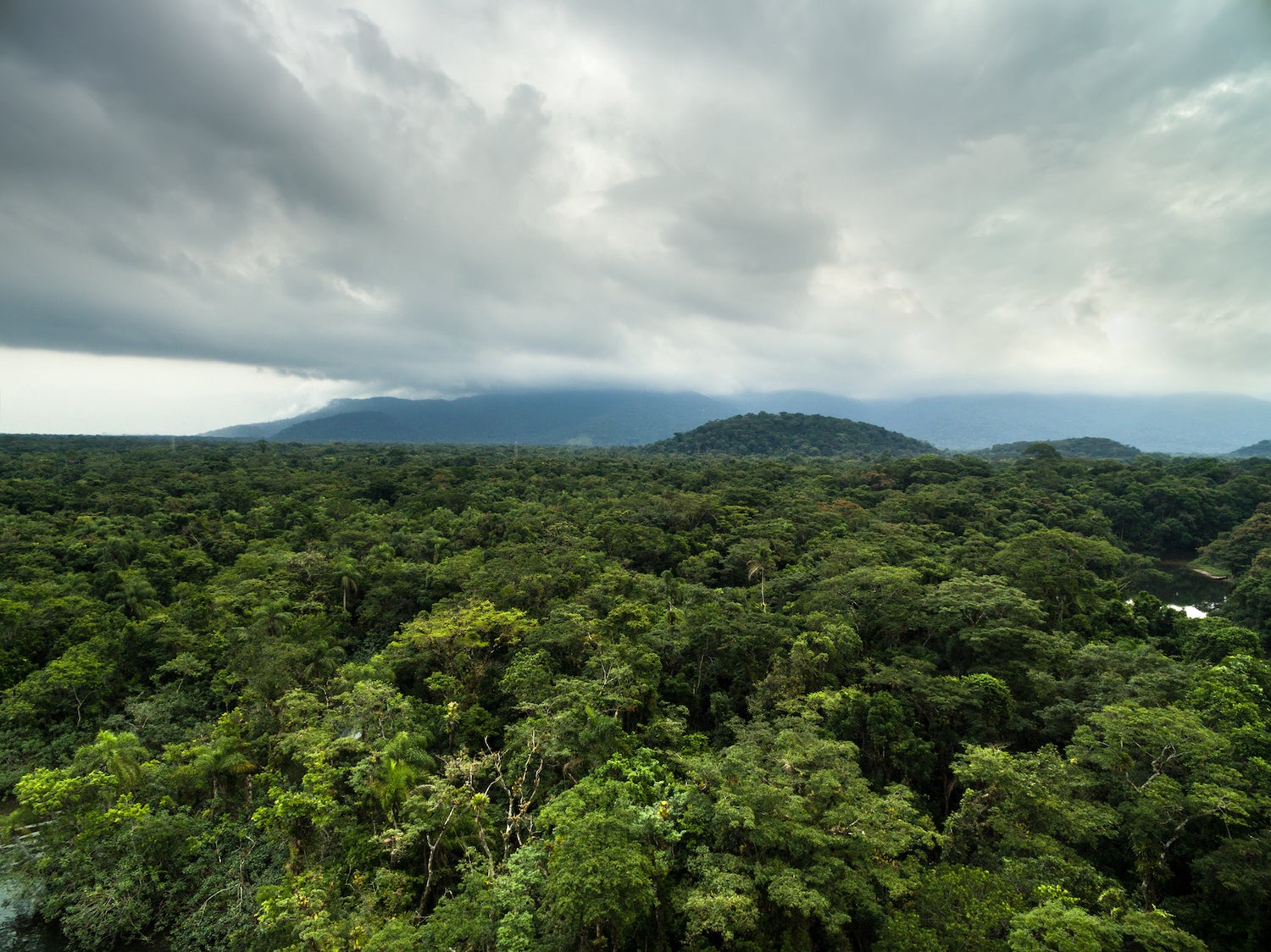On the surface, any effort to conserve land and habitats seems like a good thing, but not all efforts are built equal. When we transform acreage used for farming or logging into conservation zones, other areas, sometimes far away, end up converted into farmland and timberland to make up for lost production. This displacement causes a phenomenon called “biodiversity leaks.”
It isn’t planned; it just happens, following market demand—and a new study published in the journal Science is ringing the alarm for organizations to pay attention. “It could be that production gets shifted to a place which is more important for biodiversity, or less efficient at producing the thing that people want. In this case, the impact on biodiversity might be greater there than the benefit you get at home, doing more harm than good,” says Andrew Balmford, a professor of conservation science at the University of Cambridge and first author of the paper.
The study found, for example, that rewilding hypothetical farmland in the U.K. would shift production of wheat, barley, and rapeseed to Australia, Germany, Italy, and Ukraine. Because the U.K. is home to fewer species than these countries, the number of extinctions caused by the potential biodiversity leak could be five times greater than the number of extinctions avoided locally.
So is all conservation doomed to fail? Definitely not. Here’s what to know about the state of biodiversity leak—and how it can get plugged.
How to plug the biodiversity leak
Right now, conservation planners often don’t consider biodiversity leaks. Preliminary results from a new survey of 100 tropical project managers found that 37% had never heard of leakage, and less than half had ever taken steps to address it. The recent United Nations Global Biodiversity Framework, an ambitious target to conserve at least 30% of the Earth’s land and sea by 2030, also doesn’t consider the issue.
The big players can plug the biodiversity leak by prioritizing conservation in biodiverse areas, Balmford says, like the Amazon rainforest and Costa Rica’s Monteverde Park. And we can help fund projects in areas that take on the displaced burden of production and increase their efficiency. For instance, the Gola Rainforest Project in Sierra Leone limits deforestation while helping local farmers boost crop yields, mitigating a production shift to other areas.
What you can do
Folks living on the other side of the world might feel powerless to help fix these leaks, but Balmford says there are things they can do from anywhere.
Watch what you eat. The simplest everyday change is to help reduce demand for land-intensive goods. If we consume less red meat, for example, agricultural acreage can be turned into conservation zones with zero leakage. Balmford also points out that organic food can take up anywhere from 25% to 100% more land than conventional produce, so focusing organic purchases to only the “Dirty Dozen” can also help.
Reconsider your donations. The other biggie centers on where you send your money—if you’re able to. Balmford suggests limiting conservation donations to projects in locations that are highly diverse, versus what’s in your backyard. “Conservation efforts are disproportionately rewarding in terms of their costs, in terms of the benefits to local people, in terms of their biodiversity gains, and in terms of how vulnerable they are to things like leakage in highly biodiverse parts of Africa, Asia, and Latin America,” Balmford says. Rainforest Trust and Re:wild, for example, are two organizations that prioritize conservation in some of the world’s most biodiverse places.

